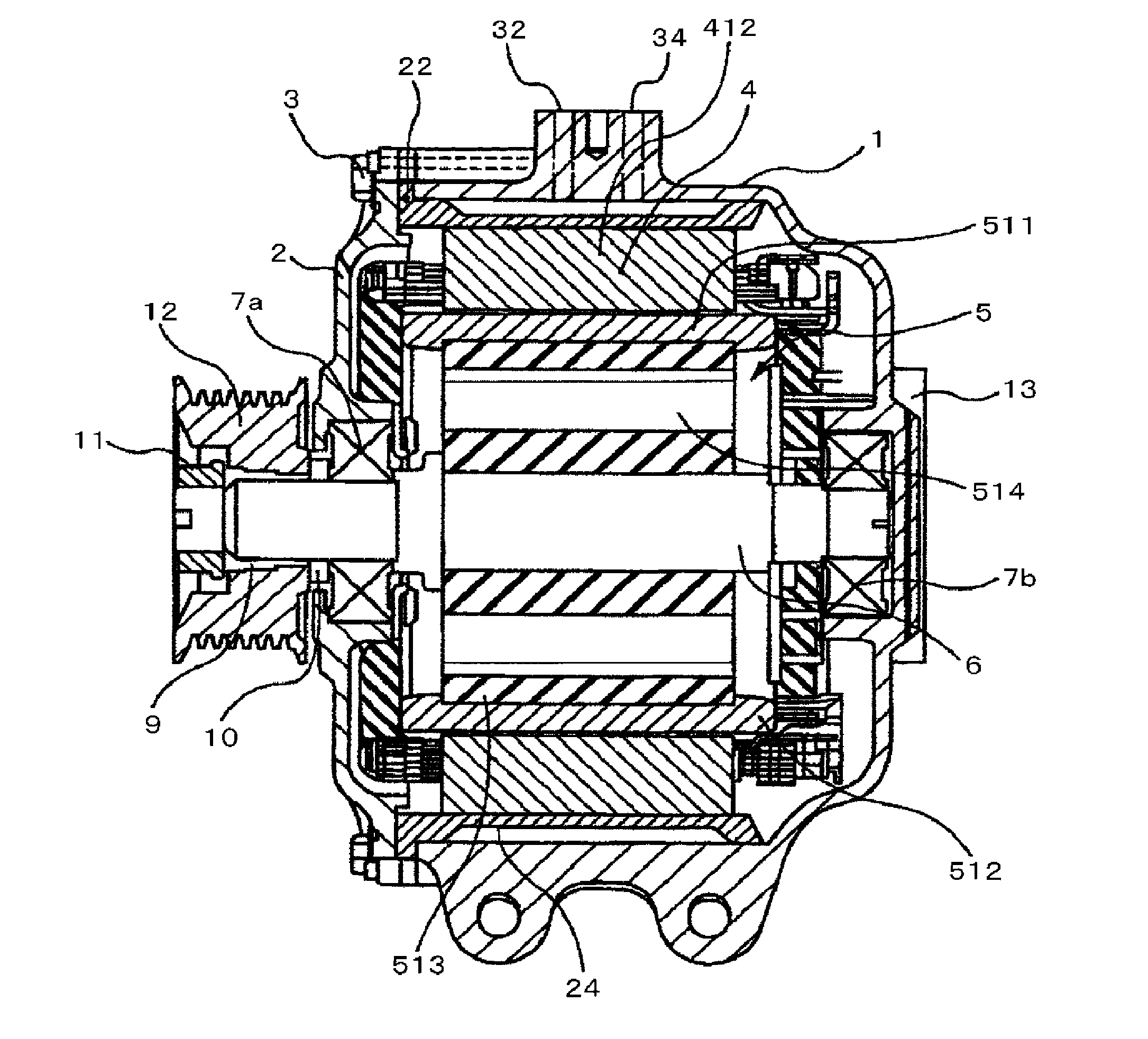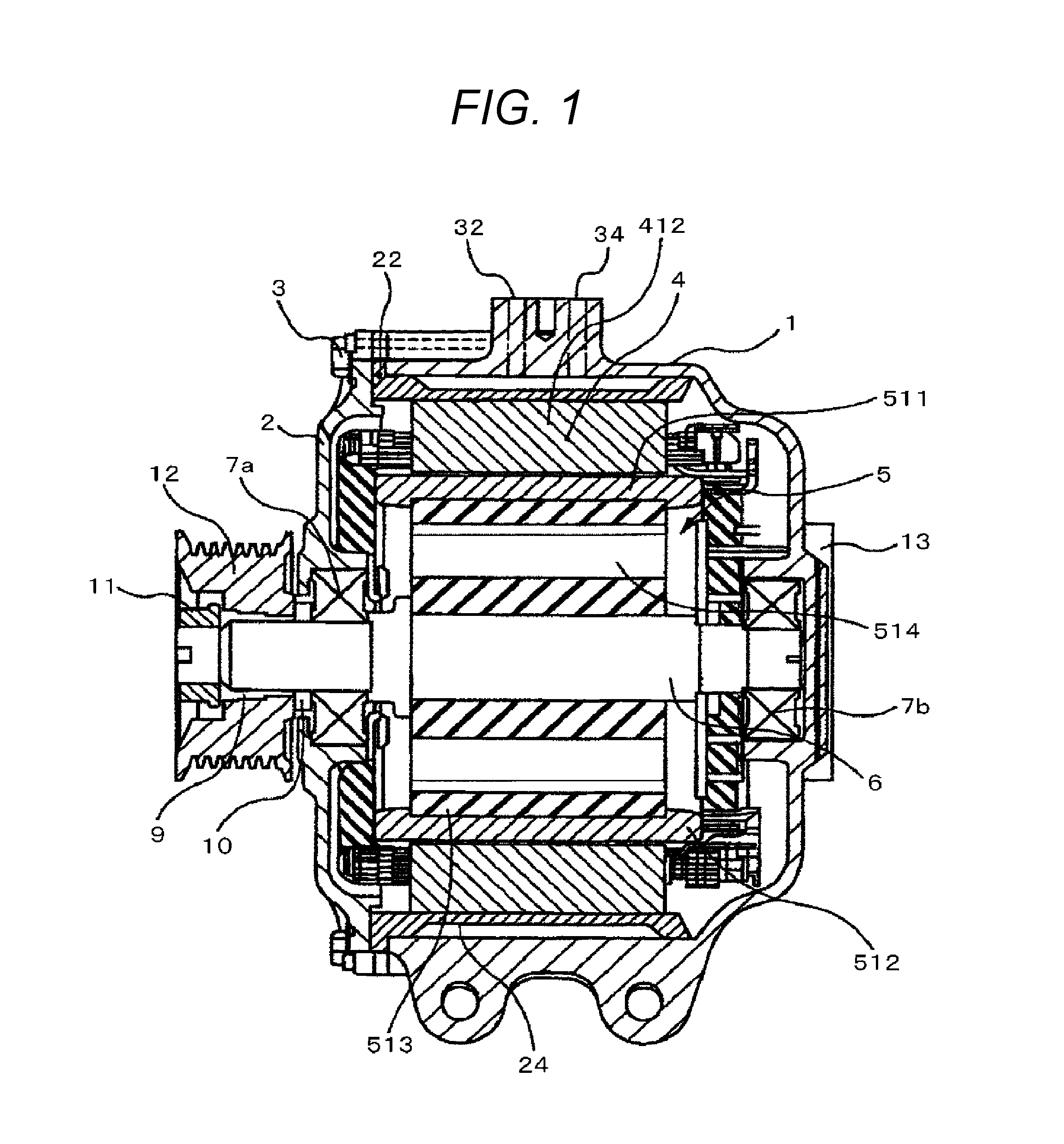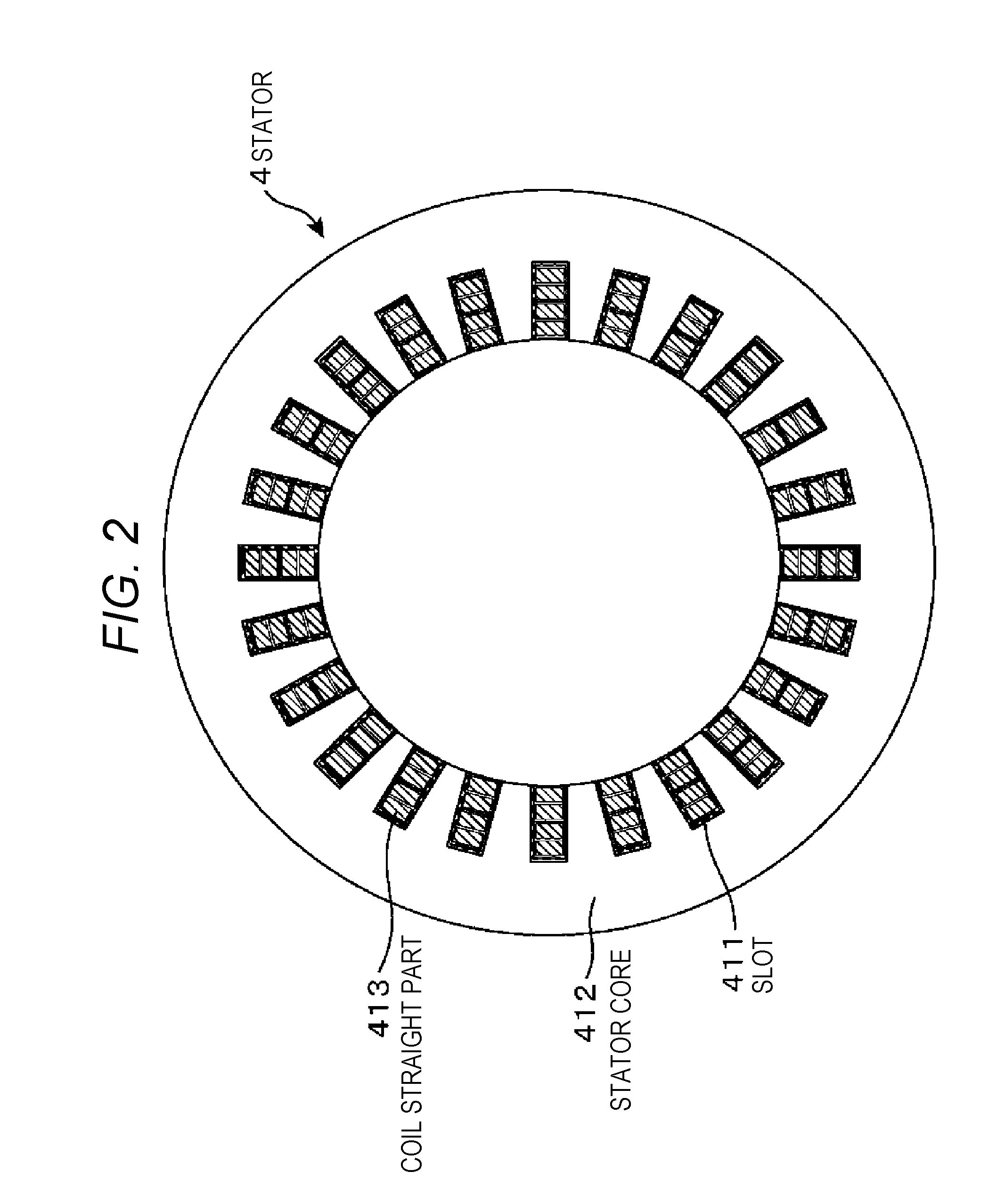Rotating Electric Machine and Method of Manufacturing Same
a technology of rotating electric machines and electric motors, applied in the direction of dynamo-electric machines, windings insulation materials, solid insulation, etc., can solve the problems of increasing the vibration applied to the stator core and heat generation of the rotating electric machine, the coating on enameled wires is peeled off, and the adhesion force between the slots in the stator core and the stator coil becomes insufficien
- Summary
- Abstract
- Description
- Claims
- Application Information
AI Technical Summary
Benefits of technology
Problems solved by technology
Method used
Image
Examples
Embodiment Construction
[0029]An embodiment of the invention will be described below with reference to the drawings.
[0030]FIG. 1 is a sectional side view of an induction motor according to a first embodiment. A squirrel cage induction motor that is an example of a rotating electric machine includes a housing having a cylindrical shape with one end in the axial direction being open and a bottom being closed, and a cover 2 for searing the open end of the housing 1. The housing 1 and the cover 2 are fastened together with multiple, such as six, bolts 3. The housing 1 is provided therein with a water channel member 22 to which a stator 4 is fixed inside thereof by shrink fit or in other manners. A flange at the left end of the water channel member 22 in FIG. 1 is fixed between the housing 1 and the cover 2, and a water channel 24 is formed between the water channel member 22 and the housing 1. Coolant for cooling the rotating electric machine is introduced into the water channel through an inlet 32 formed in t...
PUM
| Property | Measurement | Unit |
|---|---|---|
| Temperature | aaaaa | aaaaa |
| Glass transition temperature | aaaaa | aaaaa |
Abstract
Description
Claims
Application Information
 Login to View More
Login to View More - R&D
- Intellectual Property
- Life Sciences
- Materials
- Tech Scout
- Unparalleled Data Quality
- Higher Quality Content
- 60% Fewer Hallucinations
Browse by: Latest US Patents, China's latest patents, Technical Efficacy Thesaurus, Application Domain, Technology Topic, Popular Technical Reports.
© 2025 PatSnap. All rights reserved.Legal|Privacy policy|Modern Slavery Act Transparency Statement|Sitemap|About US| Contact US: help@patsnap.com



